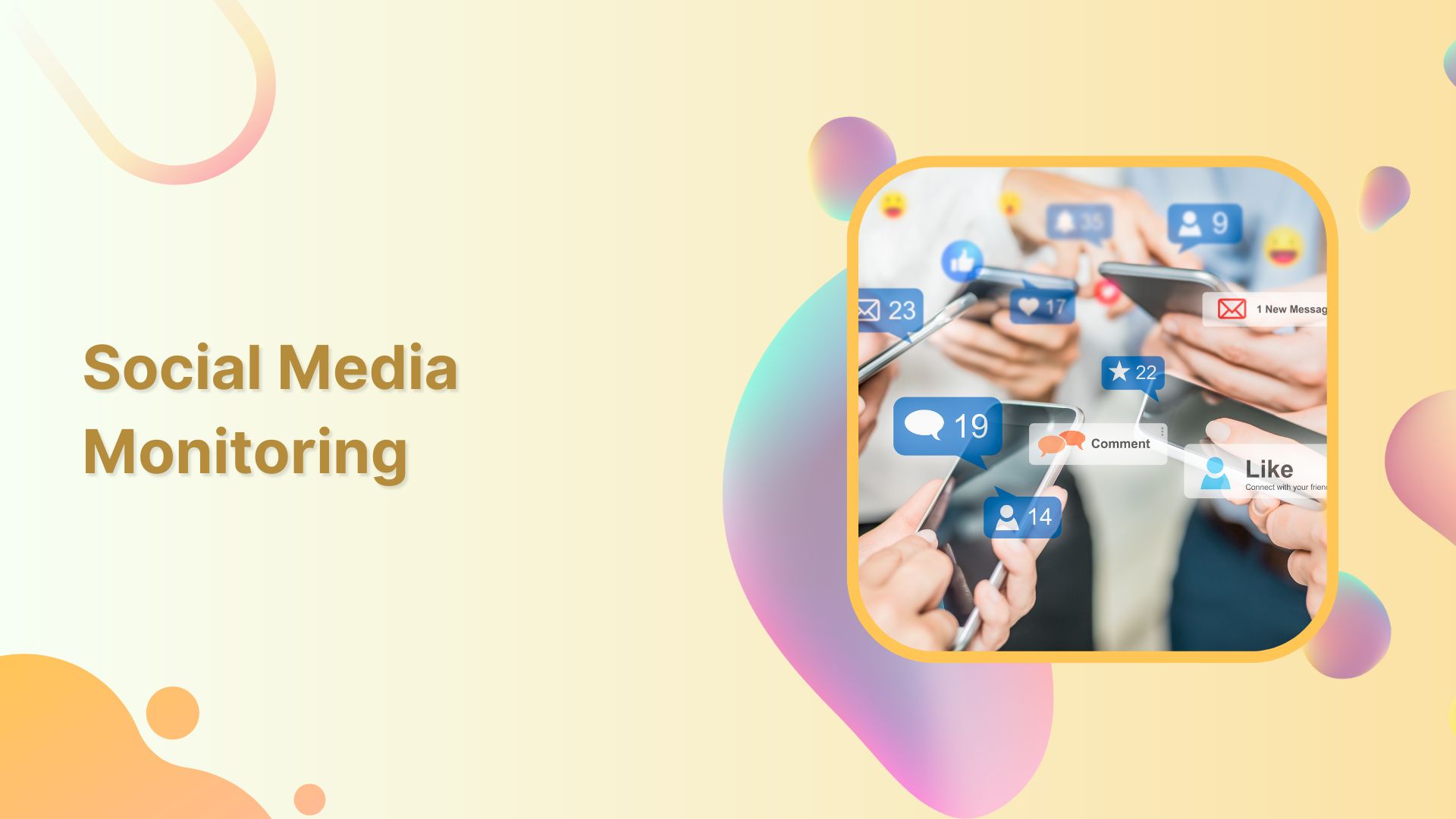In today’s fast-paced digital landscape, social media has become an integral part of our personal and professional lives. Social media platforms serve as virtual town squares where people connect, share, and engage. Social media offers businesses a treasure trove of opportunities to understand their audience, enhance their brand presence, and make informed decisions. However, with this immense potential comes the challenge of effectively managing and monitoring social media activities. In this article, we will delve into social media monitoring, exploring its importance, methods, and benefits.
Understanding Social Media Monitoring

Defining Social Monitoring
Social media monitoring refers to the process of tracking and analyzing social media platforms for mentions, discussions, and interactions related to a specific brand, product, or topic. It involves actively listening to conversations happening on platforms like Facebook, Twitter, Instagram, LinkedIn, and more.
The Evolution of Social Media Listening and Monitoring
Social media monitoring has evolved from simply tracking mentions to a comprehensive practice involving sentiment analysis, competitive benchmarking, and trend identification. What started as a way to measure brand popularity has now become an essential tool for understanding audience behavior and preferences.
Why Social Monitoring Matters
Gaining Insights into Audience Sentiment
Social media monitoring allows businesses to gauge how their target audience feels about their products, services, or industry as a whole. By analyzing sentiment, companies can adjust their strategies and offerings to align with customer preferences.
Tracking Brand Mentions and Reputation
A crucial aspect of social media monitoring is tracking brand mentions. Positive mentions can be leveraged for marketing, while negative ones can be addressed promptly to mitigate reputational damage.
Identifying Emerging Trends
Social media is often the first platform where trends emerge. By closely monitoring discussions and hashtags, businesses can identify emerging trends and capitalize on them before competitors.
Methods of Social Listening Monitoring
Utilizing Social Media Listening Tools
Listening tools like Brandwatch, AIM Insights, and Sprout Social allow businesses to monitor multiple social platforms in real-time. These tools provide insights into engagement metrics, sentiment analysis, and more.
Keyword Tracking and Hashtag Analysis
By tracking relevant keywords and hashtags, companies can monitor conversations centered around specific topics. This method helps in understanding what topics are currently popular and how the audience is engaging with them.
Competitive Analysis through Monitoring
Social media monitoring isn’t just about tracking your brand; it’s also about keeping an eye on your competitors. Analyzing their social media activities can provide valuable insights into their strategies and customer interactions.
The Benefits of Effective Social Listening and Monitoring
Enhanced Customer Engagement
Social listening and monitoring enable businesses to actively engage with their customers, respond to queries, address concerns, and acknowledge positive feedback. This fosters a stronger brand-consumer relationship.
Proactive Crisis Management
In the digital age, crises can escalate rapidly on social media. Effective monitoring allows companies to identify and address potential PR crises before they spiral out of control.
Data-Driven Decision Making
By analyzing social media data, businesses can make informed decisions about product development, marketing campaigns, and overall business strategies. This data-driven approach enhances the likelihood of success.
Steps to Implement an Effective Social Media Monitoring Strategy
Clearly Define Monitoring Objectives
Before diving into monitoring, it’s essential to outline clear objectives. Are you tracking brand mentions, monitoring sentiment, or identifying industry trends? Defining these goals will guide your monitoring efforts.
Select the Right Monitoring Tools
Choosing the appropriate monitoring tools depends on your objectives and budget. Each tool offers unique features, so research and select the ones that align with your needs.
Set Up Relevant Keywords and Metrics
Keywords and metrics are the foundation of effective monitoring. Choose keywords that are relevant to your industry and set up metrics that reflect the goals you want to achieve.
Interpretation and Actionable Insights
Collecting data is one thing; deriving actionable insights is another. Analyze the collected data to identify patterns, trends, and opportunities. Use these insights to refine your strategies.
Overcoming Challenges
Dealing with Data Overload
The abundance of data can be overwhelming. To tackle this challenge, focus on the metrics that align with your objectives. Not all data will be equally valuable.
Ensuring Data Privacy and Security
Collecting and analyzing data comes with the responsibility of maintaining privacy and security. Ensure that the tools and processes you use adhere to data protection regulations.
Navigating Misinformation and Fake News
In the era of misinformation, it’s essential to verify the credibility of the sources you monitor. False information can spread quickly, potentially harming your brand’s reputation.
Future Trends
Integration of Artificial Intelligence
AI-powered tools are expected to play a more significant role in social media monitoring. They can provide real-time insights, automate processes, and predict future trends.
Real-time Monitoring and Predictive Analysis
The future will likely see a shift toward real-time monitoring and predictive analysis. Companies will strive to anticipate consumer behavior and trends before they fully emerge.
Cross-Platform and Omni-Channel Monitoring
As consumers engage with brands across various platforms, monitoring efforts will need to become more comprehensive. Cross-platform and omnichannel monitoring will be key to a holistic understanding of audience interactions.
Conclusion
Social listening and monitoring are no longer a luxury but a necessity for businesses aiming to thrive in the digital age. By harnessing the power of social media monitoring, companies can gain invaluable insights, enhance customer relationships, and stay ahead of the competition. As technology continues to advance, embracing innovative monitoring methods will pave the way for success in a rapidly evolving digital landscape.
Ready to take your social media strategy to the next level? Request a demo of AIM Technologies, our cutting-edge social media monitoring platform. Discover how AIM can empower your business with real-time insights, actionable data, and a competitive edge in the digital realm. Don’t miss out on the opportunity to transform your social media presence.
FAQs
What is social media monitoring?
- Social media monitoring involves tracking and analyzing conversations, mentions, and interactions on social media platforms to gain insights into audience sentiment, brand reputation, and emerging trends.
How do social listening and monitoring benefit businesses?
- Social listening and monitoring enhance customer engagement, enable proactive crisis management, and facilitate data-driven decision-making by providing valuable insights.
What are some challenges in social media monitoring?
- Challenges include dealing with data overload, ensuring data privacy and security, and navigating misinformation and fake news in the digital realm.
How can businesses implement an effective monitoring strategy?
- Businesses should define clear objectives, select suitable monitoring tools, set up relevant keywords and metrics, and derive actionable insights from the collected data.
What does the future of social listening and monitoring look like?
- The future involves the integration of artificial intelligence, real-time monitoring, predictive analysis, and comprehensive cross-platform and omnichannel monitoring.




